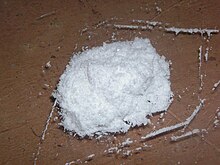Dissociative

Dissociatives are a type of hallucinogenic drug. Dissociatives can make the user feel separated or dissociated from their body and environment. They are often used as anesthetic, to make people unconscious during operations or for other medical uses.[1]
Dissociatives change users perceptions and can cause hallucinations, trance and euphoria. They are usually only used on animals or children, who won't notice these effects. However, for this reason they are also used recreationally or for fun. In many countries however, they are illegal to use for this purpose. Some dissociatives, like that produced from Salvia divinorum, enter the bloodstream and attach to opioid receptors in the brain.[2] Others attach to dopamine receptors. Most block the chemical glutamate from its normal action in the brain. Glutamate is important in how the brain processes memory and pain.[2] The most commonly available dissociatives around the world are ketamine, phencyclidine (PCP) and dextromethorphan or DXM.[3]
